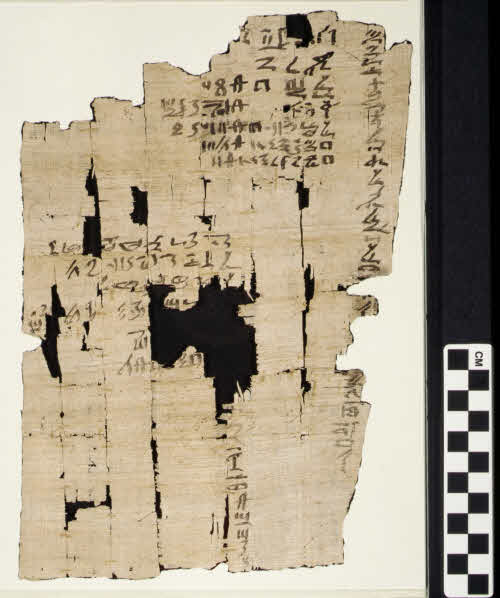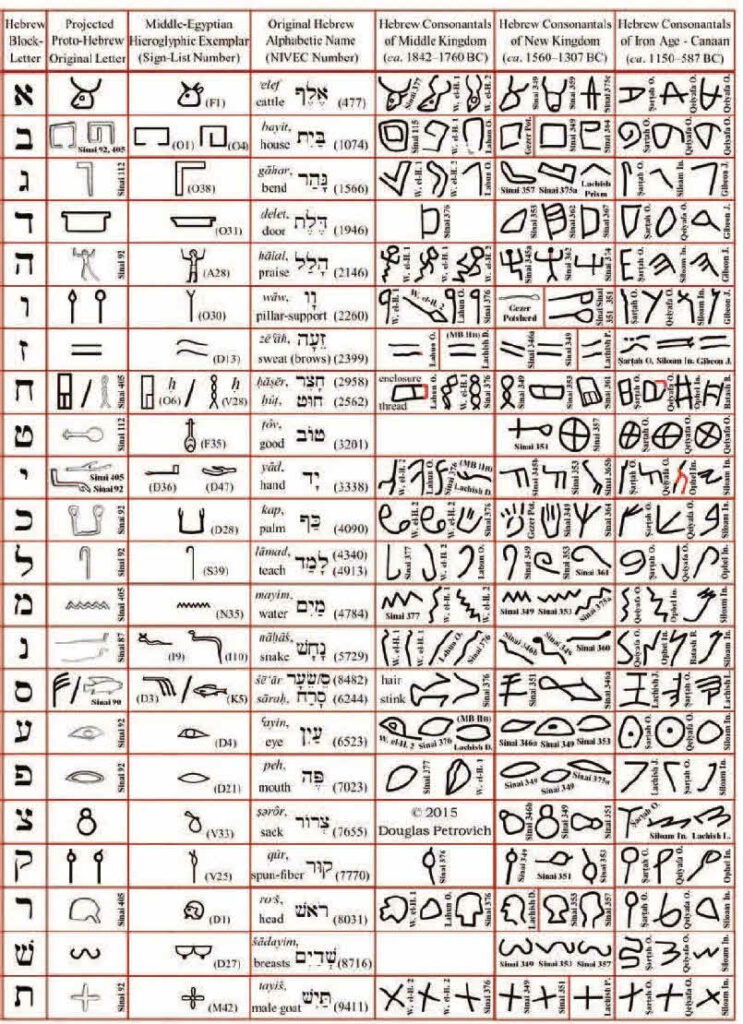The answer you probably will see to the question ‘Could early man write’ goes something like this: ‘The first system of writing was called cuneiform writing in about 3500-3000 BC.’
But that is the answer for the first system of writing that archaeologists have found so far.
Stone Age paintings have provided clues to the existence of language and why not?
If we believe that God made Adam and Eve as complete persons who named the animals, then why shouldn’t they communicate by speech and writing?
Updated 1st March 2023
Table of Contents menu:
Table of Contents:
1. Ice Age cave drawings and writings
In France and Spain about 20,000 years ago they drew animals like bison, birds and fish.
But interestingly, they also drew abstract symbols which must have had some sort of notational or numerical meaning.
Out of the 862 animal representations from the Upper Palaeolithic period, the researchers focused on three of the widest-spread symbols: the dot, the slash and the y-shaped sign.
They concluded that these were symbols to record information on the mating and birthing of the animals that gave them food and clothing.
Some archaeologists and anthropologists who were not involved with the work warn that the researchers did not investigate alternative interpretations of the three markings, nor did they investigate the meanings of other markings in Upper Paleolithic art, outside of the three that they selected. That said, several still support the theory that these markings meant something meaningful to their makers, whether they signified the seasonal activities of animals or not.
‘Ancient Humans’ First Written Words Are 20,000 Years Old’ By Sam Walters Jan 18, 2023 Discover Magazine 1
2. The earliest existing writings
The oldest surviving writings, not counting cave drawings, are inscriptions on a stone tablet from the Uruk period (3300 – 3100 BC). The original is from Kish and was in the Irak Museum. 2
Could early man write before that date?
I conclude that humanity could write well before that time.
The key point is that the stone tablet is the oldest surviving one and there probably were older ones, either not found yet, or destroyed by another nation, or they were written on materials that perished a long time ago.
Writing was long thought to have been invented in a single civilization, a theory named ‘monogenesis’.
‘History of writing’ Wikipedia 3
Scholars believed that all writing originated in ancient Sumer (in Mesopotamia) and spread over the world from there via a process of cultural diffusion.
According to this theory, the concept of representing language by written marks, though not necessarily the specifics of how such a system worked, was passed on by traders or merchants traveling between geographical regions.
However, the discovery of the scripts of ancient Mesoamerica, far away from Middle Eastern sources, proved that writing had been invented more than once.
Scholars now recognize that writing may have independently developed in at least four ancient civilizations:
Mesopotamia (between 3400 and 3100 BCE),
Egypt (around 3250 BCE),
China (1200 BCE),
and lowland areas of Southern Mexico and Guatemala (by 500 BCE).
What about if the writing did originate in ancient Sumer but before that date?
The earliest writings could have all disintegrated or they just haven’t been found yet, so early man could have had the knowledge of writing very early in history.
The earliest people could have written things on materials that did not last, then after Noah, the generations spread out from there.
Popular science is seen on TV and regularly pushes the Big Bang theory and how the dinosaurs died out and how mankind evolved as proven facts. For preconceived, so-called inaccuracies in the Bible see this article: What errors are in the Bible? Scientific inaccuracies
3. Bible stories originating around a campfire?

Humans had been speaking for a couple hundred thousand years before they got the inspiration or nerve to mark their ideas down for posterity.
‘How Writing Changed the World’ by Heather Whipps 4
But when a Mesopotamian people called the Sumerians finally did scratch out a few bookkeeping symbols on clay tablets 5,000 years ago, they unknowingly started a whole new era in history we call, well … history.
The presence of written sources denotes the technical dividing line between what scholars classify as prehistory versus what they call history, which starts at different times depending on what part of the world you’re studying.”
We are told by ‘popular history’ that mankind spent thousands of years passing on historical stories by word of mouth.
This by implication would include exaggeration and legend.
The first part of the Bible is included in this assumption.
So, when people say the Bible was passed down from generation to generation, they are just stating a theory.
‘Wasn’t the bible passed down verbally from generation to generation before it was written?’ by Spirit and Truth 5
There is no actual proof to substantiate it.
Are there reasons we should reject the theory that the biblical records were passed by word of mouth for generations before being written?
Certainly. Anyone who studies the history of oral traditions knows that details get lost, names and places are forgotten or replaced, and there is a tendency to exaggerate, either for better or worse, such that the good guys become very good and the bad guys become evil incarnate.
The Bible is written in a way that shows it is not just a book of oral traditions.
The characters are depicted in ways that are inspiring, heart-warming, true to life, convincing, and convicting.
They have their good points and their human weaknesses.”
If we start to believe that writing was a part of humanity at a very early stage, then we can see that the Bible was a written account and whenever the material used started to disintegrate, then it could be copied onto new sheets of whatever they were using at the time.
Here is an article on whether the Garden of Eden was a myth or not, where it could have been and it looks at some geographical evidence, see The Garden of Eden. A parable or real?
4. The writer of Genesis had a written account
I don’t believe that those early stories were passed only by word of mouth because by looking at Genesis we see something very interesting. It states:
This is the written account of Adam’s line…”
Genesis 5:1 NIV
‘Written account’ is a written document.
The Hebrew is ‘This book** of the generations of Adam’
‘book**’ סֵ֫פֶר (se.pher) meaning: ‘document, writing, book, letter (of instruction), written order, legal document, etc.’ 6
There is every possibility that Adam from the very beginning kept records of passing days, years, life stories and other things.
5. What could Adam have written on?
The Mangyan tribe in the Philippines used bamboo shoots to carve their script on. 7
The ancient Tamils of South India used palm leaves. 8
Here is a list of materials that have been used for writing on:
Plant-based written materials:
- Palm leaf (Borassus),
- Ola leaf (Corypha umbraculifera),
- Birch bark (Betula),
- Papyrus (Cyperus papyrus),
- Bamboo and wooden slips,
- Paper,
- Amate Trema micrantha,
- Ficus aurea,
- Parabaik (Streblus asper),
- Samut khoi (S. asper),
- Kraing (Morus bark).
Other written materials:
- Clay tablet,
- Wax tablet,
- Intaglio,
- Stone,
- Animal skin Parchment,
- Vellum,
- Oracle bone,
- Silk text,
- Geoglyph (large drawing on the ground). 9
6. How long do these written materials survive?
Surprisingly, palm leaf manuscripts can be kept for up to 400 or 500 years in a dry environment, 10 but nowhere near as long where there was any humidity.

The above papyrus written document is nearly 4000 years old!
The oldest, legible, written papyrus in the British Museum dates from the 12th Dynasty (1985–1795 BC).
Materials like papyrus, parchment and paper are fragile and perishable materials and they quickly deteriorate in the presence of moisture. This explains why the majority of papyrus and parchment documents are only found in Egypt’s dry sand because its climate is extremely dry, and hot, and is dominated by desert.
Whereas, these perishable documents are rarely ever found in the rest of the Middle East which has more humidity or receives more rainfall.
No papyrus or parchment documents survive in the area of Babylonia.
Baked clay is slightly more tolerant of moisture and therefore thousands of clay tablets have been found in its soil.
They may well have written other documents on perishable materials, but they would have all perished over the years.
7. Experts thought the Incas couldn’t write…
It’s long been believed the great Inca civilization never left behind any written records.
‘Could the Inca People Write?’ by Ken Ham 13
But what if that’s just because we couldn’t recognize their writing?
A fascinating new study reveals the Incas did leave a written history behind 12 – we just didn’t recognize it…
One such group of artefacts is known as “khipu.”
These are a system of knots tied into cords.
Amazingly, these knotted cords are actually a system to store numbers…
There is no reason to believe that Adam, Noah, etc. did not have a written language/language system and could have handed documents down to Moses and later generations.”
8. Could Adam or Noah have written documents?
Had Adam, Noah, Shem, Abram and others written on palm leaves, or something similar?
Did they write down their stories on parchments that were deteriorating by Moses’ time?
Did Moses have a stack of those deteriorating records from which he copied them to form Genesis chapters one to five?
It would make sense that Moses did indeed have lots of ageing, deteriorating documents that he was able to read and then from those, write what we now know as Genesis.
9. Was Hebrew the earliest language?
There is controversial research into the Hebrew language and its antiquity.
I say ‘controversial’ because anything that has a connection with the Bible is seen, by many secular authorities, as being religious and unscientific, and therefore the research conclusions have to wade through many biased, knee-jerk reactions before it is taken seriously.
Here is a comment from Creation Ministries International that does take the book seriously:
Douglas Petrovich, who earned a PhD with a major in Syro-Palestinian archaeology from the University of Toronto and taught about ancient Egypt at Ontario’s Wilfrid Laurier University, published a book on the earliest alphabet.
‘The world’s oldest alphabet’ Evidence suggests it may have been developed by the Hebrews, not the Phoenicians, as believed. by James R. Hughes 14
In his book ‘The World’s Oldest Alphabet’, he argues that Hebrew was the first language to use a script that represented the consonants of a language.
An alphabet that represents only consonants is called an abjad. A consonantal alphabet does not have symbols for the vowel sounds.
The vowel sounds are left implicit and added among the consonants when the text is read.
For example, the consonants CT could be read as ‘cut’ or ‘cat’, depending on the context.
Petrovich states that, “Until the present day, one of the greatest unsolved mysteries in the field of epigraphical* studies related to the ANE [Ancient Near East] has been the identification of the language of the pictographic, proto-consonantal script that has been found on a variety of writing surfaces in Egypt, Sinai, and the Levant**.” [pp. 6–7]
His contention is that Hebrew is the language that is represented in the original proto-consonantal script—not Phoenician (or another language) as has been generally believed.”
* ‘Epigraphy’ is the study of inscriptions, or epigraphs, as writing.
** ‘The Levant’ is an approximate historical geographical term referring to a large area in the Eastern Mediterranean region.

Eugene H. Merrill, PhD Distinguished Professor of Old Testament Studies (Emeritus) Dallas Theological Seminary writes in the Introduction of the book:
However, if one grants the antiquity of the written Hebrew tradition in line with that of cultures surrounding the Levant*, nothing should stand in the way of positing analogously** the existence of Hebrew writings also composed in pre-alphabetic form.
From Introduction by Eugene H. Merrill, PhD Distinguished Professor of Old Testament Studies (Emeritus) Dallas Theological Seminary November 2016 for ‘The World’s Oldest ALPHABET – Hebrew as the Language of the Proto-Consonantal Script’ by Douglas Petrovich 16
Putting this line of thought to the side, the focus of Professor Petrovich’s work is not so much on theories about Hebrew pre-alphabetic literatureas [sic] on the antiquity of the Hebrew alphabetic tradition itself.
Indeed, his thesis is that the Hebrew alphabet was not only early, but the earliest of all, the progenitor of all alphabets and alphabetic writing!
Important to his thesis is the irrefutable fact that the use by scribes of alphabetic notations is attested to from a number of sites, exclusively so far to the ancient Near East.
Very early movements along this line are seen in both cuneiform syllabic and Egyptian proto-alphabetic signs as visual precursors to the consonants.”
* ‘The Levant’ is an approximate historical geographical term referring to a large area in the Eastern Mediterranean region.
** ‘analogously’ means: similar or alike in such a way as to permit the drawing of an analogy.
Surely when Adam and Eve were created they had the capacity to write as well as talk. After all, Adam did name all the animals that God had created, so did he just remember them all, or did Adam write those names down? (Genesis 2:19-20)
Was that written language Hebrew and has that survived throughout history right until now?
But in several instances, the skill of writing had died out in some civilisations -which resulted in a ‘technology lost’ scenario and had to be ‘reinvented’ at a later date.
It certainly is an intriguing thought that the Hebrew language was the first one.
Also remember that Adam (and Eve) were God’s perfect, pinnacle of creation and we don’t know how much was lost when they disobeyed God and were driven from the Garden of Eden.
See this article about the fifth day of creation where the sea creatures and flying creatures come into being and day 6 when the land animals are created, including mankind – God’s pinnacle of creation, see According to their kinds.
Or this article on the first day of creation, see: Does Genesis fail scientific study?
See Creation days 2 and 3 where a whole day is given over to creating the very important atmosphere and then the next day the vegetation.
See the article on the Creation of the sun moon and stars and looks at why God chose to create these heavenly bodies so late in Creation, which, if not looked at in-depth, makes Genesis look scientific.
And this article looks at why God named day, night, sky, land, sea and stars but not other things.
10. Frequently asked questions (FAQ)
How did early humans write?
There are a lot of surprising materials that mankind could use and have used.
Here are just some:
Clay tablets, wax tablets, stone, animal skin parchment, bone, silk, palm leaves, bark, papyrus, bamboo, paper, etc.
If they are stored in a dry environment, palm leaves can survive for 400 to 500 years.
Papyrus has been found nearly 4000 years old.
There must be thousands of ‘documents’ that have been lost due to decay, so the ‘evidence’ for early writing is going to be hard to find.
What is the earliest recorded history?
A ‘recorded’ history means written documentation.
Many scholars believe the Sumerian cuneiform script is the oldest at about 2600 BC.
But some recent scholars believe that Moses led the Israelites out of Egypt (the Exodus) in 1445 or 1446 BC.
Many think that the Bible is not a reliable source of history and that it was passed down orally.
Traditionally Moses was the writer of Genesis which refers to very old history which he copied from ancient manuscripts: “This is the written account of Adam’s line…” (Genesis 5:1).
Therefore I propose that Genesis is the earliest recorded history copied from various decaying manuscripts handed down or recopied by previous generations.
How many years did Moses live before Jesus?
Some recent scholars believe that Moses led the Israelites out of Egypt (the Exodus) in 1445 or 1446 BC (not the widely-held view of it being during the time of Ramses II, which doesn’t really fit the history).
Moses lived for a further 40 years after the Exodus.
Taking the evidence of the crucifixion, Jesus’ baptism, the temple’s age, King Herod’s reign and the Roman census a fair assumption would be that Jesus was born around 4 B.C.
Moses died about 1400 years before Jesus was born.
References – open in new tabs:
‘Ancient Humans’ First Written Words Are 20,000 Years Old’ By Sam Walters Jan 18, 2023, Discover Magazine ↩
‘Wasn’t the bible passed down verbally from generation to generation before it was written?’ by Spirit and Truth ↩
Vine, W. E., Unger, M. F., & White, W., Jr. (1996). Vine’s Complete Expository Dictionary of Old and New Testament Words (Vol. 1, p. 21). Nashville, TN: T. Nelson. ↩
The Culture and Art of the Mangyan by: Jericho Paul Santos ↩
From Upper Egypt, Thebes, Deir el-Bahri, Tomb of Ipy (TT 315, MMA 516B), Tomb of Meseh, MMA excavations, The Met Museum Credit Line: Rogers Fund and Edward S. Harkness Gift, 1922 ↩
‘We thought the Incas couldn’t write. These knots change everything’ New Scientist ↩
‘Could the Inca People Write?’ by Ken Ham, Answers in Genesis ↩
‘The world’s oldest alphabet’ Evidence suggests it may have been developed by the Hebrews, not the Phoenicians, as believed. by James R. Hughes ↩
From Introduction by Eugene H. Merrill, PhD Distinguished Professor of Old Testament Studies (Emeritus) Dallas Theological Seminary November 2016 for ‘The World’s Oldest ALPHABET – Hebrew as the Language of the Proto-Consonantal Script’ by Douglas Petrovich ↩
From Introduction by Eugene H. Merrill, PhD Distinguished Professor of Old Testament Studies (Emeritus) Dallas Theological Seminary November 2016 for ‘The World’s Oldest ALPHABET – Hebrew as the Language of the Proto-Consonantal Script’ by Douglas Petrovich ↩

